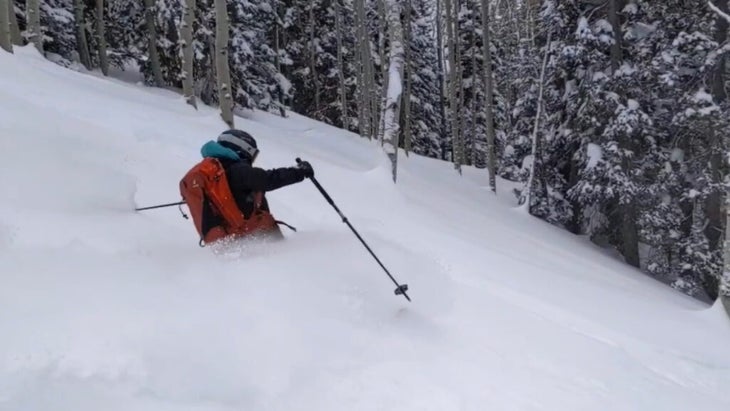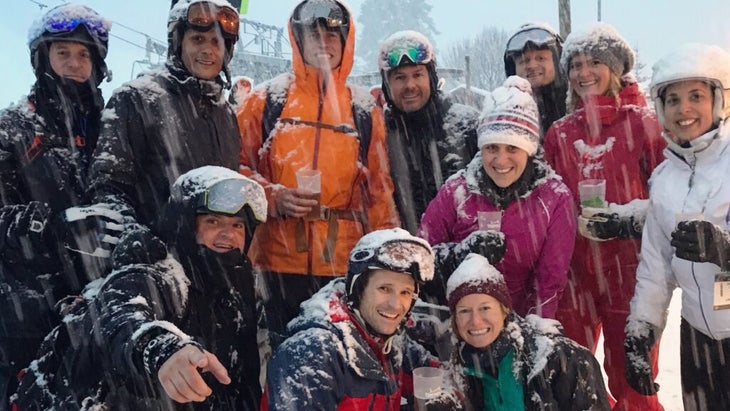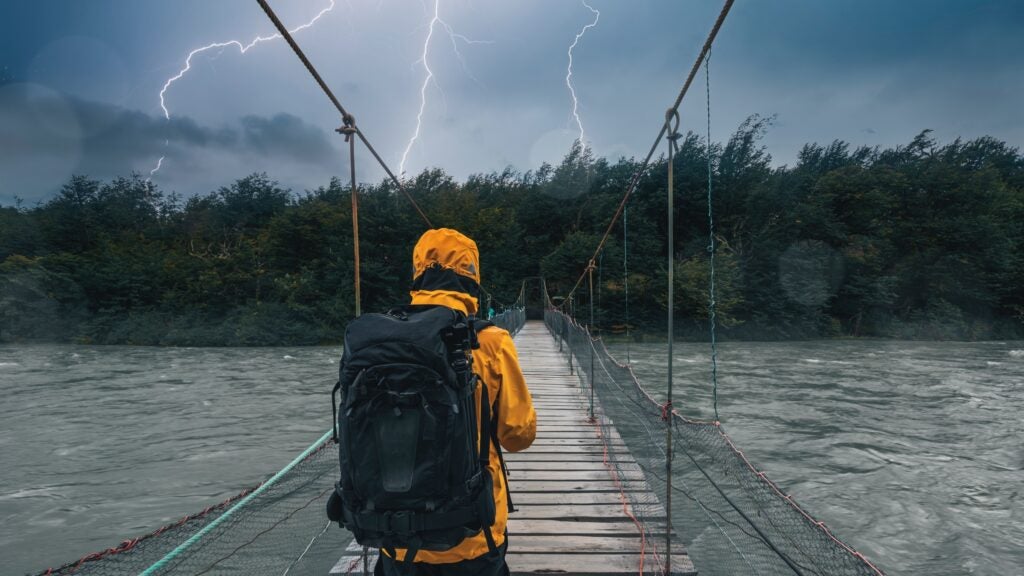No products in the cart.
Outdoor Adventure
How to Get a Refund on Your Trip When There’s Bad Weather
There’s nothing worse than being skunked by the weather on a trip. My first foray to Thailand coincided with a typhoon. I visited in November, typically the end of the country’s rainy season, but my entire week in Koh Samui was one big downpour.
The extremes of climate change—from increasingly intense heat waves to more frequent polar vortexes—have made travel feel like a constant gamble, no matter the time of year. This year’s Atlantic hurricane season, which runs from June through November, blew in like a lion with Beryl, the earliest category-five Atlantic hurricane on record, and experts warn that a record-setting string of storms will likely hit the East and Gulf Coasts in the coming months.
Although technology is improving, it’s still impossible to predict the weather with 100 percent accuracy. Global forecaster AccuWeather makes projections up to 90 days out, but specific, precise daily reports cannot be made more than ten days in advance, according to a 2019 study published in the Journal of the Atmospheric Sciences. Given the chaotic nature of the atmosphere, two weeks out is probably the farthest accurate estimate we can hope for in the future.
So where does that leave travelers who plan ahead? Is there more we can do than just book a trip and hope for the best? Yes! Several companies have begun offering smart options for outdoor adventurers, designed to provide peace of mind and protection when agenda-altering weather strikes. These are my favorites.
1. You Can Now Safeguard Your Camping Trip

“Some people are fine camping in the rain,” said Alyssa Ravasio, founder and CEO of Hipcamp, a booking platform for more than 120,000 campsites on private land across the U.S. “But most aren’t looking for a soggy outdoor experience.”
She and her team noticed that inclement weather created an awkward situation between campsite hosts and guests. On such occasions, when guests were outside of the refund window, sometimes hosts would feel bad about the weather and offer refunds. Or if they didn’t, campers became upset, she said.
Hipcamp decided it needed a scenario in which hosts wouldn’t have to make the tough call between having happy campers and losing income. The solution was a partnership with Sensible Weather, which began in June. The four-year-old weather-prediction company partners with over 4,000 booking platforms, including campsite-specialized ones like KOA, Outdoorsy, and Travel America. It also works with hotel, ski, and golf resorts to offer a weather-guarantee reimbursement option—up to 100 percent of what you paid—that can be added to a reservation at checkout.
The cost of this coverage varies, based on where you’re going, the time of year, and the total price of the trip, but it typically costs around 10 percent of the total booking price. In addition to covering excessive rain, you can be reimbursed for extreme heat and snowfall.
Here’s how it works: Say you pay Hipcamp $300 for a three-day trip and tack on the $30 fee for Sensible Weather coverage. Maybe your guarantee specifies that you’ll receive a reimbursement if it rains three or more cumulative hours between 8 A.M. and 8 P.M. each day. The specific amount of precipitation allowable before the reimbursement kicks in will vary and is determined by a daily forecast sourced from well-regarded government agencies like NOAA and NASA. If it rains for four hours on the second day, you’d receive $100 back from Sensible Weather.
Reimbursement is automatically initiated the day of the inclement weather via an electronic money transfer, like PayPal, with funds arriving in three to five days. There’s no need to file a claim, or even cancel. If you choose to still stick it out in the drizzle, you could get your entire vacation paid for. This way, Hipcamp hosts don’t lose any money either.
According to Ravasio, 14 percent of Hipcamp users booking tent sites more than 30 days in advance have added a Sensible Weather guarantee to their reservation, and 6 percent of all Hipcamp users, including those booking RV sites and cabins, have opted for the protection.
2. You Can Weather-Insure Other Vacations, Too

The new app WeatherPromise has a similar guarantee program for travelers. But it uses AI to predict the weather and targets travelers who have planned trips more than two weeks in advance. It will reimburse users the cost of airfare, lodging, and activities if precipitation surpasses specified limits. To make its calculations, WeatherPromise technology looks at thousands of similar trips, crunches 55 terabytes of data, and suggests a “promise” fee, which is the amount you’ll pay the company to insure you from rain ruining your plans.
According to WeatherPromise cofounder Dan Price, it takes the app just seconds to generate an estimated fee for coverage, and protection typically runs between 3 and 8 percent of a trip’s total price. I plugged in the details of a $600 vacation to Vail, Colorado, from September 4 to 7, for example, and the app told me it would charge $45 for a promise. A $2,500 getaway in Paris from September 22 to 28 would cost me $150.
Then I looked at a trip to the Caribbean in hurricane season. If I booked a $2,000 vacation to Puerto Rico between October 21 and 25, I’d pay WeatherPromise $120 for protection. If it rained at least four cumulative hours between 8 A.M. and 8 P.M. on each of at least three days of my four-day trip, I’d receive a full $2,000 refund after submitting proof of my trip cost.
“With WeatherPromise, hurricane season is arguably the best time to travel, because flights and accommodations are typically less expensive and crowds are smaller,” noted Price. And now, if the worst weather happens, you can get your money back.
Although the company primarily offers its services independent of booking platforms, it has partnered with the vacation-rental marketplace HomeToGo. Similar to Sensible Weather, rain is the focus, but the company is looking to expand to heat, snow, and wind (a key factor for anyone planning surf and kitesurfing trips).
3. You Can Also Book Your Ski Trip When Powder Is Predicted

Nothing ruins a ski vacation faster than no snow, and scoring a powder day can feel like winning the lottery in these climate-challenged times. But diehard skiers and snowboarders have discovered some tricks to line up trips with epic conditions.
In the early aughts, Mike Ruzek, a financial planner and avid skier based in Park City, Utah, had a client clue him in to NOAA weather buoy station 51101 thousands of miles west in the Pacific Ocean that surfers were using as an alternative to wave-forecast sites like Surfline, to estimate how big swell would get by the time it hit the Hawaiian Islands. The client, who split his time between Maui and Park City, believed the buoy’s movements correlated to storm cycles in Utah’s Wasatch Range.
Curious, Ruzek did some research and discovered that when the buoy went from floating on swells of around 5 to 15 feet—the point which followers described it as “popping”—a storm would usually hit the Wasatch 12 to 14 days later.
Ruzek doesn’t have a background in meteorology, but he did know that low-pressure systems tend to produce the most snow in winter. “When a low-pressure system rolls in [across the Pacific], it forces the water upward, making the buoy pop,” he posited. “About two weeks after a spike in the buoy’s wave height, Utah gets a dump of snow.”
Initially, Ruzek started testing the buoy to schedule “sick” ski days from work, and he found it was surprisingly accurate. In 2013, he set up a Facebook page called The Powder Buoy to share the forecasts, and an Instagram handle followed that now boasts 43,000-plus followers.
A NOAA spokesperson said the organization is unaware of a specific buoy measurement correlating with this weather phenomenon so far from the buoy’s location. But Ruzek is not wrong. I spoke with Steven Businger, a University of Hawaii professor of meteorology, who confirmed that the slow motion of huge planetary waves in the jet stream often results in fairly long, persistent weather patterns that can effectively be determined for a location over ten days or more.
Last year the buoy was 80 percent spot-on when it came to pow predictions in Utah, said Ruzek, and he’s heard from skiers who use its reports to predict snow 12 to 14 days out in Colorado and Wyoming. “One mountain town in Colorado has a coffee shop that writes our reports on a chalkboard,” he said proudly. Though he could charge for the readings, Ruzek loves the authenticity of keeping it free. “There’s enough monetization in the ski world,” he said.
Steve Conney also shares free winter-weather intel as a side hustle called Powderchasers. The New York native started forecasting snowfall at U.S. ski resorts for a small email list of friends more than two decades ago, when there was no internet offering such a service. “I had phone numbers for the snowplow drivers and the people who worked at Eisenhower Tunnel in Colorado,” he told me. “I’d call the employees at Baked in Telluride, because I knew they were up at 5 A.M. and could report on the snow.”
Today Powderchasers has nearly one million followers on Instagram, and its detailed forecasts are still free, thanks to sponsors like Ikon Pass. The posts are fun and full of stoke: “EPIC ALERT: Snow Returns for South America. 3+ Feet Predicted” read the August 2 headline.
Conney now has a small weather-obsessed team to help him. “We read the same models as everyone else, but we understand what skiers and snowboarders want,” he said. “The deepest snow is not always your best chase. We look at winds, potential closures, snow density, and other factors.”
If you’d prefer more in-depth, personalized forecasts and custom trip planning, the company has what are called concierge packages that range from $149 for one trip to $699 for forecasts for eight trips. “This is for the fanatics who can only get out on the slopes once or twice a year for that big ski trip,” he said.

Jen Murphy splits her time between Colorado and Maui and now relies on The Powder Buoy to track swell and snow.

